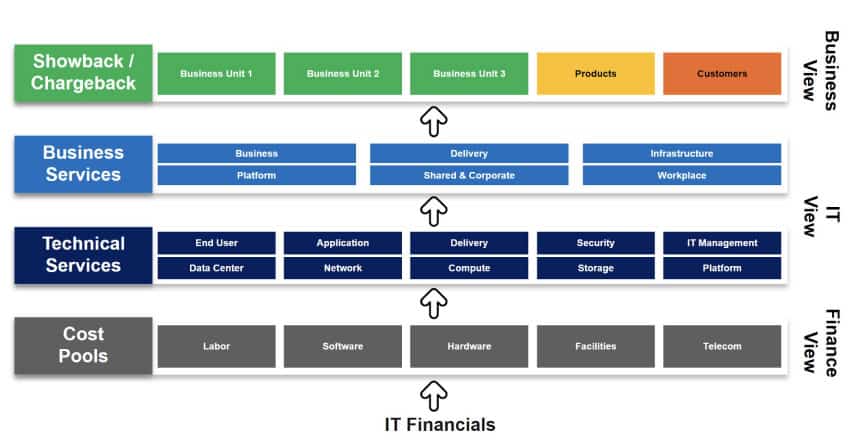Most organizations struggle with the way the growing cost of technology is being managed from a business perspective. With the introduction of Technology Business Management (TBM), business and technology leaders now have a standard model (or language) to jointly manage IT spending for both running and growing the business.
Technology Business Management (TBM) is a framework designed to help companies manage and optimize their IT (Information Technology) resources with a clear business dimension. In simpler terms, TBM is about understanding and controlling the costs, quality, and value of technology investments, so that they align better with business goals.
The advantages are tremendous, but not always obvious for most organizations.
TBM helps a company see exactly how much it’s spending on technology and gives insight in the amount of money that is allocated to certain business capabilities. This isn’t just about the cost of buying computers or software; it includes everything from paying IT staff salaries to maintaining data centers and managing cybersecurity.
Example: Imagine a company spends money on various IT services, such as cloud storage, customer management software, and online security. TBM would help break down these costs clearly, showing how much each service costs and which business areas are using them.
With a clear view of costs, TBM allows companies to make better decisions about where to invest their IT budget. This could mean investing more in technologies that generate revenue or cutting costs in areas that are not yielding enough benefits.
Example: If a retailer finds through TBM that its online store platform is drawing a lot of customers and driving sales, it might decide to invest more in improving the e-commerce site rather than spending as much on in-store technology.
TBM ensures that IT decisions are in sync with the business’s strategic objectives. By linking IT costs and outcomes to business performance, companies can ensure their tech investments are supporting overall business goals, not just IT goals.
Example: A hospital might use TBM to connect its investment in telehealth technologies to broader goals such as improving patient outcomes and extending services to remote areas, ensuring the technology supports the hospital’s mission.
TBM provides a common language for IT and business leaders to discuss IT investments. This improved communication helps ensure that everyone understands why certain IT expenses are necessary and how they benefit the company.
Example: In meetings between IT managers and other business executives, TBM could help clarify why upgrading the company’s cybersecurity measures is crucial for protecting client data and maintaining trust, aligning this IT need with the business’s need for reputation management.
By tracking how IT investments perform, TBM helps companies plan future technology spending more effectively and allows for straightforward simulations in changing IT landscapes. This helps avoid overspending or underspending in areas that are crucial for business success.
Example: Based on past data showing successful returns on investment from cloud solutions, a company might plan to gradually increase its reliance on cloud services rather than maintaining costly on-premise servers.
Another advantage of the framework is its capacity to create multiple views on a single framework providing insight to multiple personas like:

This multi-dimensional view is further enhanced with more detailed cost drivers and cost-collectors.
Combining unit views on the different layers creates a large versatile framework akin to a Lego set, comprising numerous modular components that enable the creation of a wide array of solutions.
In essence, TBM is about making informed, strategic decisions regarding technology within a business, ensuring that every dollar spent on IT contributes to business objectives in a measurable way. It’s like having a detailed budget for a road trip, knowing exactly how much you will spend on fuel, food, and lodging, and how these expenses will help you enjoy and successfully complete your journey.
At Covalens, we have the IT, the financial and the business know-how to help customers in adopting the TBM framework in an end-2-end manner.
As one of the important deliverables, we are building a TBM Cube with three dimensions: a Financial, an IT and a Business View, as illustrated in this figure:

It is also our goal to embed the TBM framework into the organization’s culture and DNA through appropriate change management. We can help you to implement the framework in a pragmatic, agile way, delivering value in the short run, and helping you from there to gradually evolve towards higher levels of TBM maturity.
If you want to know more about how we can support you, please do not hesitate to get in touch with bert.teuwen@cronos.be, or call us: +32-475/53.23.30.
Bert Teuwen
+32-475/53.23.30
bert.teuwen@cronos.be
Covalens HQ
Veldkant 33A
2550 Kontich